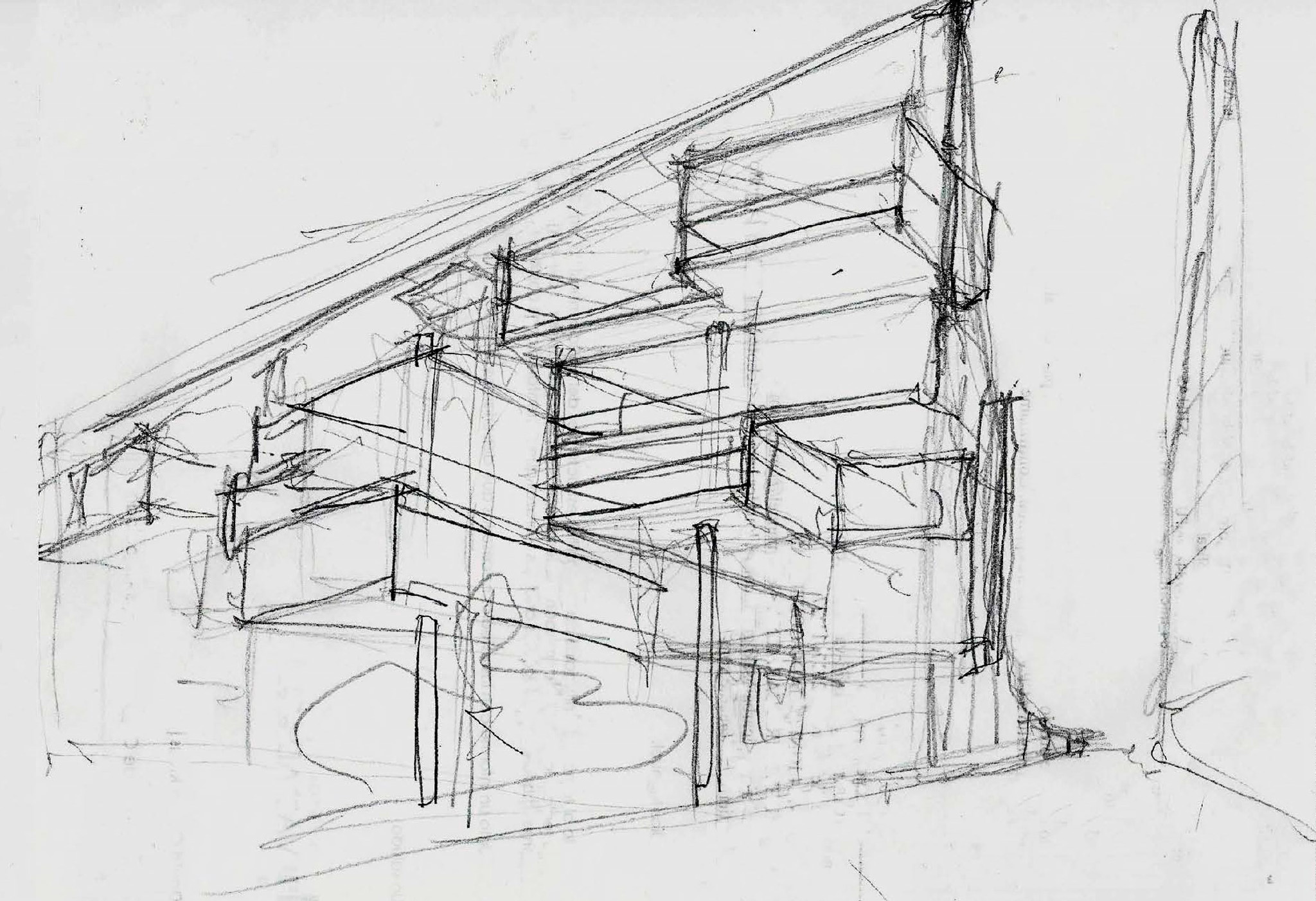The Cidade also has something of an airport, there are no planes, and it is the airport itself that wants to take off. The Fontán building also takes off, it is subject to folds like the whole Cidade, but it is back, I dare say.
I also dare to say that it is back because Andrés Perea's architecture cannot be hidden under a carpet.
The carpet that covers the constructions, which in a certain way reduces them to mere extras in this single role, is emptied, hollowed out, made transparent, and lightened in the Fontán building and begins to be the recipient of the multiple instruments that Andrés Perea's architecture brings into play.
In addition, the roof interacts with what it covers, which in turn ceases to be neutral and silent and, once again driven by the fertility of its architecture, multiplies into grandstands, viewpoints, patios, corridors, reaching structures, installations, materials, etc.
And what is under the carpet, I don't know if I'm wrong, if so I apologize, I haven't been there, which hierarchically should be habitable only as waste, enters into the orbit of silent warehouses, of industrial warehouses outside working hours, of half-finished or self-built works, which are those interiors in which one feels at ease, the unforeseen, improvised habitability. Architecture everywhere, as befits Andrés' work, but as a splendid residue.
What was meant to be a flight or part of a take-off becomes a construction and the carpet becomes a building. What were the suitcases, the bags, the packages that remained inside the plane, which will not take off, nor does it need to. The architecture keeps it on the ground.
Text by Josep Llinàs. Barcelona, November 2022.






























